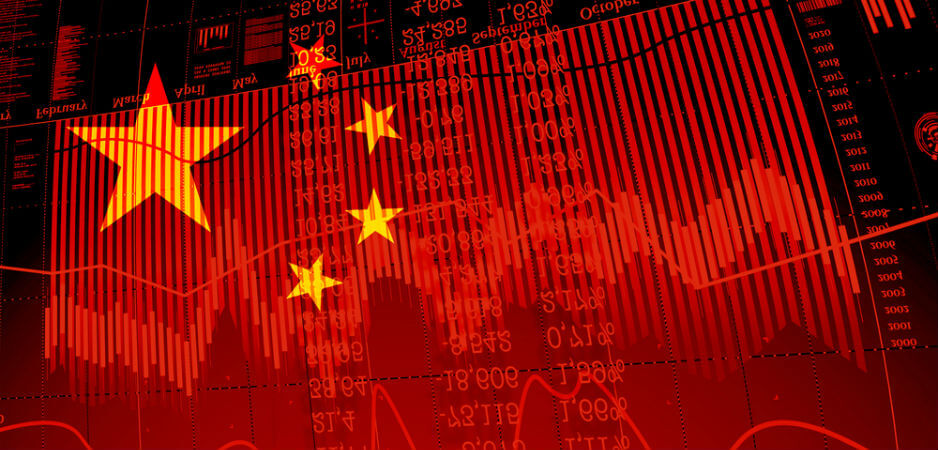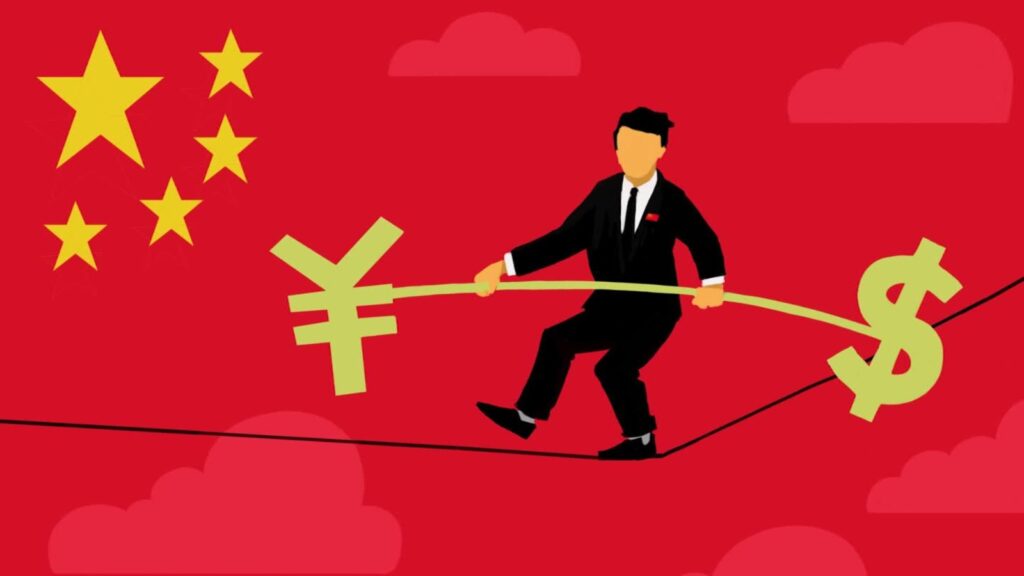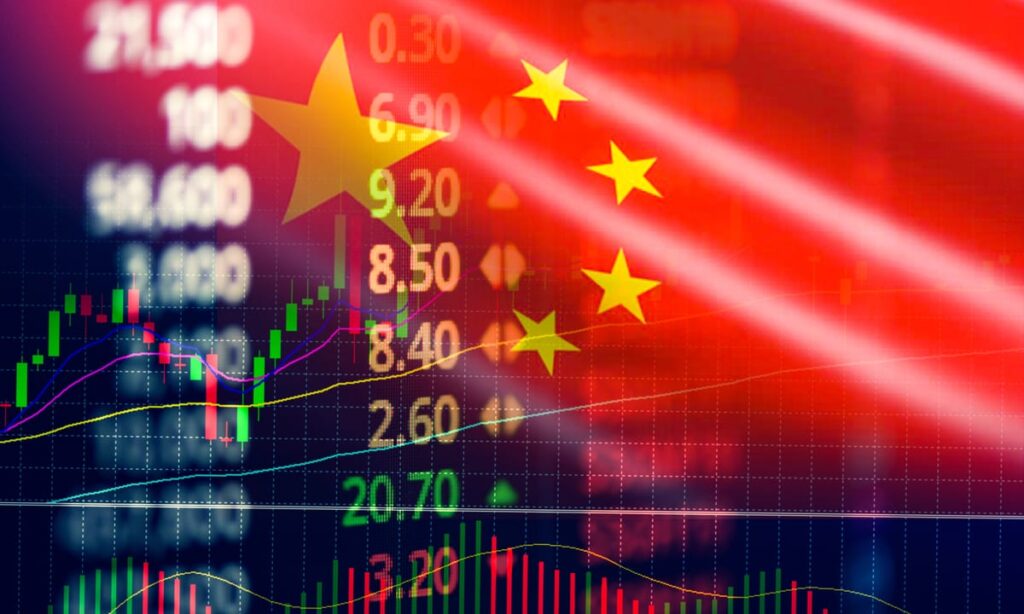
China gross domestic product falls to 3% in 2022, the second lowest level in 50 years.
Since gross domestic product grew 2.3% in 1974, China’s economy has grown at its weakest pace.
China’s economy shrinks to 3% in 2022, the second-lowest growth rate in 50 years in the world’s second-largest economy, according to official data released Tuesday.
China’s annual GDP in 2022 is 21.02 trillion yuan ($17.94 trillion), below the government’s target of 5.5%, according to the National Bureau of Statistics (NBS). To learn more about the problems that cause this and China gross domestic product, we will see the article below.
What Is China Gross Domestic Product?

The total value of all goods and services produced in China during a particular time period is that country’s China gross domestic product (GDP). Only finished products and paid services are included.
It gives an overall picture of the health of an economy by measuring the size and growth rate of output, and is usually calculated on a quarterly basis. This in turn can guide businesses, investors and policy makers.
Agriculture, industry and services are the main contributors to China’s GDP.
According to the World Bank, in 2019, China’s agricultural sector contributed 7% of the country’s GDP, followed by industry with 39% and the service sector with 54%.
Compared to a year earlier, China’s economy grew 18.3% in the first quarter of 2021.
How Has China’s GDP Evolved Over Time?
Since his predecessor Deng Xiaoping implemented the reform and opening-up policy in the late 1970s, China’s economy has developed rapidly.
Beijing’s acceptance of the market sparked an economic boom, with GDP growing at a rate of about 10% annually from 1989 to 2019 and peaking at 15.4% in the first quarter of 1993. .
However, the once impressive growth rate of China gross domestic product has slowed in recent times. Due to pressure from the US-China trade war, it fell to a 6.0% correction in 2019 and continued to decline in 2018 due to the coronavirus epidemic.
The first decline in GDP since the end of the Cultural Revolution in 1976 occurred in the first quarter of 2020, when it fell 6.8% from a year earlier. Data from the National Bureau of Statistics shows it has gradually recovered for the year, with annual growth rates of 3.2% in the second quarter, 4.9% in the third quarter and 6.5% in the fourth quarter.
In total, this results in an economic growth rate of 2.3% for all of 2020, exceeding the IMF’s 1.9% growth forecast for China. Meanwhile, it is expected that the outlook for advanced economies, such as the US, Germany and Japan, will deteriorate throughout the year.
How does China Gross Domestic Product Compare To Other Countries?

China gross domestic product growth is predicted by the IMF to be 8.2% in 2021 and by the Organization for Economic Co-operation and Development to be 8%.
Both CASS and the World Bank forecast a somewhat slower growth rate of 7.8%.
According to Standard Chartered Bank’s most recent global outlook, China’s GDP growth will pick up to 8% in 2021, with year-over-year growth potentially surging to 18% in the first quarter due primarily to the low base created by the country’s historic contraction earlier this year rather than actual economic activity.
Every time we release an episode of the Inside China podcast, we dive into a specific topic, combining independent research with exclusive interviews to bring you fresh perspectives on a superpower is rising. We are currently providing consistent updates on the coronavirus outbreak across the country.
Additionally, each week in the US-China trade war podcast, political economist Finbarr Bermingham summarizes the most recent events on tariffs, diplomacy and the economy from Post reporters and editors.
China Gross Domestic Product In 2022

China gross domestic product in dollars significantly decreased this year from USD 18 trillion in 2021 to USD 17.94 trillion last year, preeminent as a result of a sharp increase in the dollar’s value relative to the RMB (the Chinese currency) in 2022.
In 2016, the Chinese economy was worth 121.02 trillion RMB, up from 114.37 trillion RMB in 2021.
China gross domestic product growth in the fourth quarter was 2.9% year over year, down from 3.9% in the third quarter as a result of widespread covid lockdowns that affected major industrial and commercial hubs like Shanghai.
A crucial economic statistic known as industrial output increased by 3.6% in 2022 and 1.3% in December.
In 2022, China’s fixed asset investment increased by 5.1%.
According to the NBS, the economic recovery’s “unstable” base persists “despite the overall stable economic performance.”
According to the statement, the nation would fully deepen reform and opening up while putting special emphasis on boosting market confidence to support economic growth.
The 3.0% annual GDP growth in 2017 was a severe drop from the 8.4% in 2021, and it was attributed to a number of issues, most notably China’s isolation from the outside world as a result of its zero Covid policy.
China had set a modest goal of 5.5% economic growth for the previous year, but it remained unachievable due to the coronavirus’s effects.
In contrast, the urban unemployment rate fell to 5.5% in December from 5.7% in November, despite estimates that one in five people in China were unemployed.
However, NBS data shows that in 2022, the job market in China remains significantly constant.
According to the figures, 12.06 million more new urban jobs were produced in 2017 than the annual objective of 11 million.
The international situation is still complicated and serious, and at the same time, the trio of domestic pressures including falling demand, supply shock and weakening expectations are still present, so the foundation of the domestic economic recovery is not strong.
China will prioritize economic stability above all else and pursue progress while maintaining stability.
The worrisome economic downturn came as Chinese President Xi Jinping began his historic third term late last year after being re-elected by the Communist Party’s biennial congress.
Several factors, including the downturn in the real estate market and the crackdown on powerful corporations like Alibaba, are believed to have contributed to the slowdown in the Chinese economy. These factors include the Covid-free policy, which his government fully lifted this month, opening China up to the outside world for the first time in three years.
Conclusion
Above is information related to China gross domestic product and the reasons that China’s GDP fluctuates. Hope you got more useful information.




